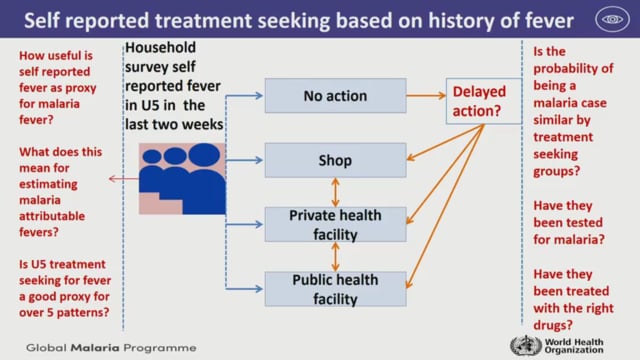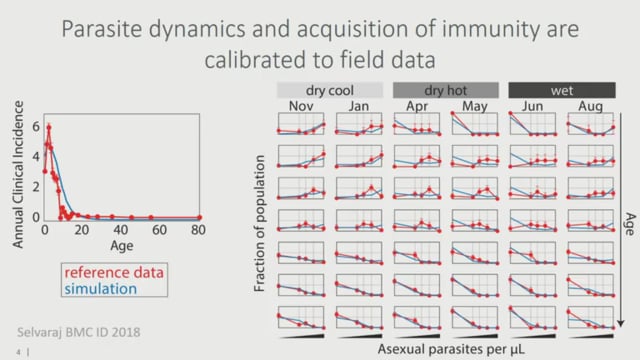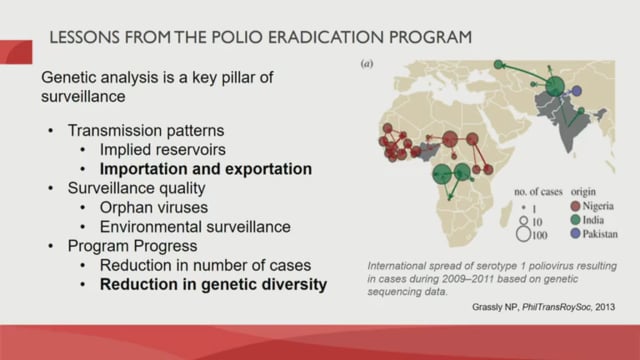ASTMH 2018: Session 42 “Alan J. Magill Malaria Eradication Symposium”
Published: 18/12/2018
THEMES: THEMES: Basic Science | Epidemiology | Health Systems
MESA Correspondents bring you cutting-edge coverage from the 67th ASTMH Annual Meeting
Session 42: “Alan J. Magill Malaria Eradication Symposium”
This annual symposium honouring the life and work of ASTMH Past President Alan Magill focused on one of the key pillars of the WHO’s Global Strategy for Malaria 2016 – 2030: Surveillance, not just as a passive activity but as an intervention for an active response.
Philip Welkhoff highlighted Alan Magill’s catalytic vision on how we should work together energetically to pursue malaria eradication through partnerships and education.
Abdisalan Noor gave an overview of the methods that WHO uses to estimate the malaria burden for the World Malaria Report. He highlighted the importance of this singular platform to track regional, national and global progress in the fight against malaria and its role in shaping global malaria policy as it contains the best official estimates of morbidity and mortality. He also gave an overview of the methods used, their limitations, and potentially how they could be improved. He acknowledged how the uncertainty of these estimates increases when we move towards measurement of attributable malaria deaths. Finally, he highlighted recommendations on how to improve malaria burden estimates. Among others he suggested improving the existing parasite prevalence models, increasing the quality and use of routine data, tracking other metrics of the burden of malaria to contextualize both cases and deaths, and beginning to think about comparative clinical and prevalence studies across different transmission settings.
Jaline Gerardin presented the case for modelling to support targeting and combinations of interventions. She highlighted the role of modelling in understanding diverse field observations and the capability of modelling to tie together data obtained from different geographical settings and to test and compare possible intervention strategies. Three aspects are critical for successful models: transmission, populations, and how the interventions are implemented. She presented some examples of modelling from her Institute using data from several countries, and an overview of a hypothetical practical roadmap for model-informed decision-making, adapting the scenario predictions from dynamical models of various scenarios.
Dyann Wirth discussed the molecular tools already available to advance progress against malaria and how to bring new thinking and approaches to achieve global goals. The Global Malaria Technical Strategy highlighted the need to transform surveillance into a core intervention, and she made the case for improving surveillance through the use of genomics. The Global Polio Eradication program is an example of how genomics can assess transmission patterns, improve the quality of surveillance, and track progress. Prof Wirth also highlighted how routine genetic surveillance is already used to help the discovery and tracking of drug and insecticide resistance and genetic tools can help identify hrp2-deletions for diagnostics, or to predict vectoral capacity. The challenge is to validate the utility for each use scenario for these tools and incorporate these data into the national framework, in a form that is useful for decision-making by national malaria managers.
Pedro Aide focused on the example from the routine Malaria Case Surveillance System in Mozambique, which is applied nationally, from routine community health workers reporting data emerging from health facilities, to district level monthly aggregated reports that are then used by the Ministry of Health to guide decision-making. These data can also be used to stratify the districts by reported cases in order to monitor the impact of interventions. In southern Mozambique, there has also been a focused effort to respond to surveillance with focal investigations, test and treat strategies or reactive focal mass drug administration campaigns. He concluded that both epidemiology and entomology surveillance systems should be the backbone of National Malaria Control Programs.
Pete Gething described the evolution of geospatial and geostatistical models to maximize the utility of the data obtained from the currently available malaria surveillance systems. Given that the methods used now have several limitations, he highlighted the fact that the available global malaria data is not always optimized for operational planning and implementation support or for the stratification of risk in low transmission settings. The Malaria Atlas Project is focusing on how to obtain better malariometric data which includes granular surveillance, serology and entomology data, and new higher-resolution covariates. The goal is to develop a “toolbox” of geospatial methods that can complement the available data, potentially enabling a rapid increase in the quality and granularity of routine surveillance data.
A final question was posed to the panel about how the different surveillance approaches could help decide whether the global burden of malaria is decreasing or increasing. The intriguing answers depended on what was being measured and the availability of data for each approach. Broadly speaking, all the presenters agreed on the fact that we know more about malaria than we did in the past, that we have more integrated knowledge about where we stand but, at the same time, we are also more aware of what we still need to know. Despite the gains achieved, and continuing progress in some areas (for example in countries now being declared malaria-free), data shows that overall progress has reached a plateau. We need to use the data and tools available to ensure that we are more efficient in our interventions and accelerate towards elimination across the globe.
Chair and Co-Chair: Regina Rabinovich (Harvard TH Chan School of Public Health) and Philip Welkhoff (Bill & Melinda Gates Foundation)
This report was written by Regina Rabinovich and Maria Tusell with editorial support from Professor Graham Brown.
Published: 18/12/2018
THEMES: Basic Science | Epidemiology | Health Systems


